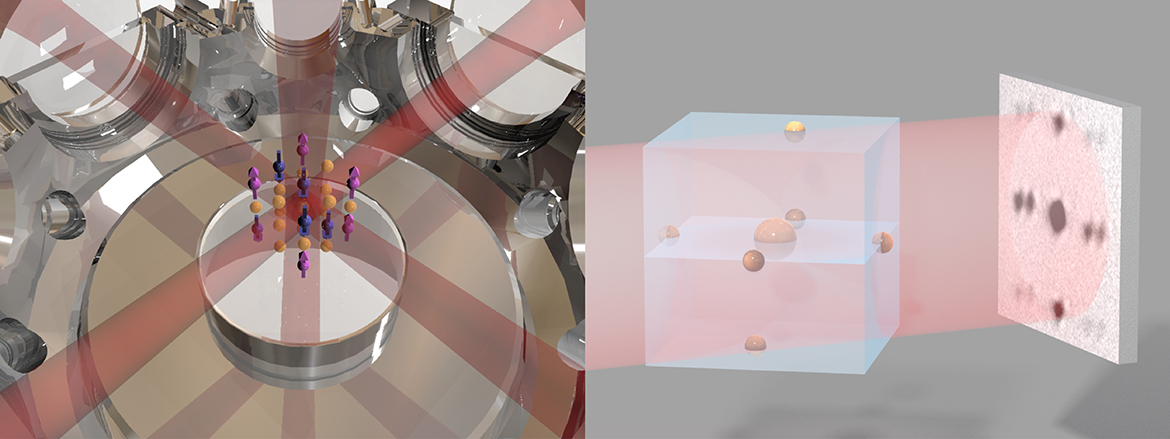Physicists in Dr. Yingmei Liu’s research group at Oklahoma State University have made the first experimental observations of few-body non-equilibrium spin dynamics in an ultra-cold spinor Bose-Einstein condensate (BEC) confined by cubic optical lattices.
This research, published on September 10 in the journal Physical Review Letters (PRL), offers a crucial bridge between the well-studied realms of two-body and many-body interactions. Understanding the transition between these realms is not only important fundamentally but also vital for future applications like quantum information science. Zihe Chen, the lead author of this PRL paper and a Ph.D. candidate in OSU physics department, and his colleagues have experimentally demonstrated that lattice-confined spinor BECs provide a perfect platform to understand this complicated transition. Their experiments have been performed in a quantum quench scenario, in which they drive a BEC out of equilibrium by rapidly changing one experimental parameter. They have observed non-equilibrium dynamics consisting of spin-mixing oscillations at multiple frequencies after distinct quantum quench sequences. By identifying oscillation signatures of up to six atoms in a lattice site, they have confirmed that the observed dynamics can reveal atom number distributions of an inhomogeneous system and enable precise measurements of two important parameters determining the spinor physics. This research has been generously supported by the Department of Defense, the National Science Foundation, the Noble Foundation, the Oklahoma Center for the Advancement of Science and Technology, and Oklahoma State University.

